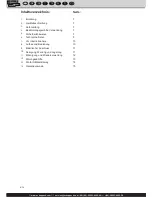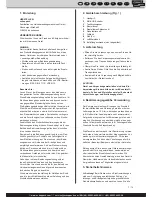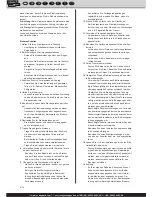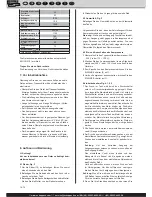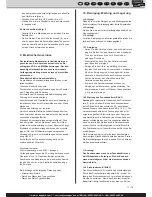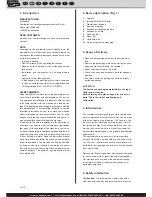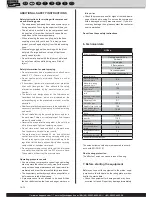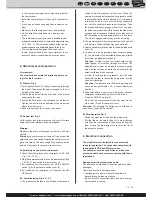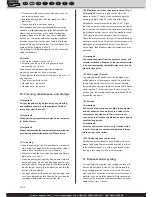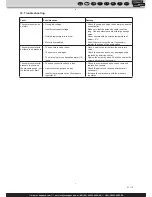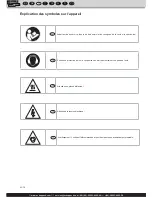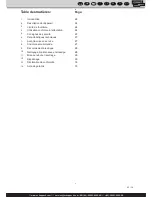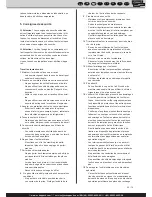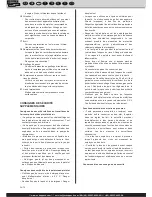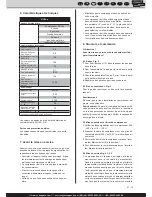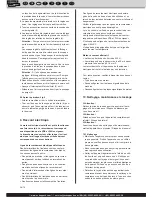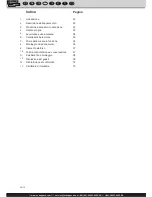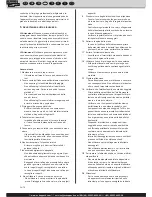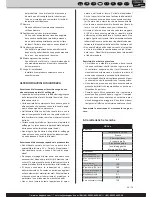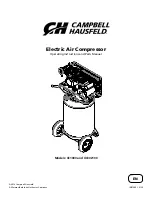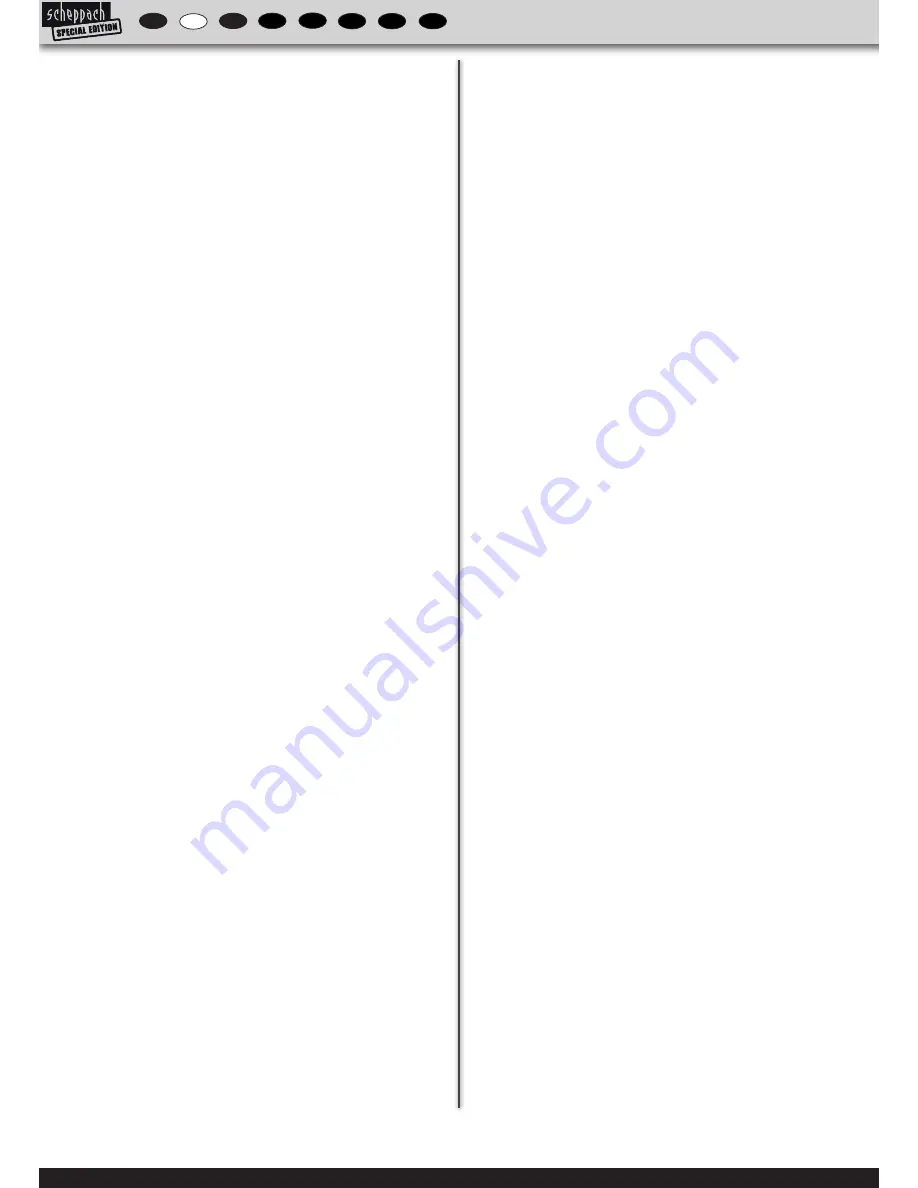
www.scheppach.com /
+(49)-08223-4002-99 /
+(49)-08223-4002-58
10.2 Maintenance work on the pressure vessel (Fig. 1)
n
Important!
To ensure a long service life of the
pressure vessel (7), drain off the condensed water by
opening the drain valve (10) each time after using.
Release the vessel pressure fi rst (see 10.4.1). Open
the drain screw by turning counter-clockwise (looking at
the screw from the bottom of the compressor) so that all
the condensed water can run out of the pressure vessel.
Then close the drain screw again (turn it clockwise).
Check the pressure vessel for signs of rust and damage
each time before using. Do not use the compressor with
a damaged or rusty pressure vessel. If you discover
any damage, then please contact the customer service
workshop.
n
Important!
The condensed water from the pressure vessel will
contain residual oil. Dispose of the condensed water
in an environmentally compatible manner at a suita-
ble collection point.
10.3 Safety valve (Figure 5)
The safety valve (6) has been set for the highest per
-
mitted pressure of the pressure vessel. It is prohibited
to adjust the safety valve or remove its seal. Actuate
the safety valve from time to time to ensure that it works
when required. Pull the ring with suffi cient force until
you can hear the compressed air being released. Then
release the ring again.
10.4 Storage
n
Important!
Pull out the mains plug and ventilate the equipment
and all connected pneumatic tools. Switch off the
compressor and make sure that it is secured in
such a way that it cannot be started up again by any
unauthorized person.
n
Important!
Store the compressor only in a dry location which
is not accessible to unauthorized persons. Always
store upright, never tilted!
1047.1 Releasing excess pressure
Release the excess pressure by switching off the com
-
pressor and using the compressed air which is still left
in the pressure vessel, e.g. with a compressed air tool
running in idle mode or with a blow-out pistol.
11. Disposal and recycling
The equipment is supplied in packaging to prevent it
from being damaged in transit. The raw materials in
this packaging can be reused or recycled. The equip-
ment and its accessories are made of various types of
material, such as metal and plastic. Defective compo-
nents must be disposed of as special waste. Ask your
dealer or your local council.
•
Places where the connection cables have been cut
due to being driven over.
•
Insulation damage due to being ripped out of the
wall outlet.
•
Cracks due to the insulation ageing.
Such damaged electrical connection cables must not be
used and are life-threatening due to the insulation damage.
Check the electrical connection cables for damage
regularly. Make sure that the connection cable does
not hang on the power network during the inspection.
Electrical connection cables must comply with the ap-
plicable VDE and DIN provisions. Only use connection
cables with the marking „H05VV-F“.
The printing of the type designation on the connection
cable is mandatory.
AC motor
•
The mains voltage must be 230 V~
•
Extension cables up to 25 m long must have a
cross-section of 1.5 mm
2
.
Connections and repairs of electrical equipment
may only be carried out by an electrician.
Please provide the following information in the event of
any enquiries:
•
Type of current for the motor
•
Machine data - type plate
•
Machine data - type plate
10. Cleaning, maintenance, and storage
n
Important!
Pull out the power plug before doing any cleaning
and maintenance work on the equipment. Risk of
injury from electric shock!
n
Important!
Wait until the equipment has cooled down complete-
ly! Risk of burns!
n
Important!
Always depressurize the equipment before carrying out
any cleaning and maintenance work! Risk of injury!
10.1 Cleaning
•
Keep the equipment free of dirt and dust as far as pos-
sible. Wipe the equipment with a clean cloth or blow it
down with compressed air at low pressure.
•
We recommend that you clean the equipment imme-
diately after you use it.
•
Clean the equipment regularly with a damp cloth and
some soft soap. Do not use cleaningagents or sol-
vents; these may be aggressive to the plastic parts in
the equipment. Ensure that no water can get into the
interior of the equipment.
•
You must disconnect the hose and any spraying tools
from the compressor before cleaning. Do not clean the
compressor with water, solvents or the like.
20 / 76
FR
IT
CK
DE
SK
PL
HU
GB

